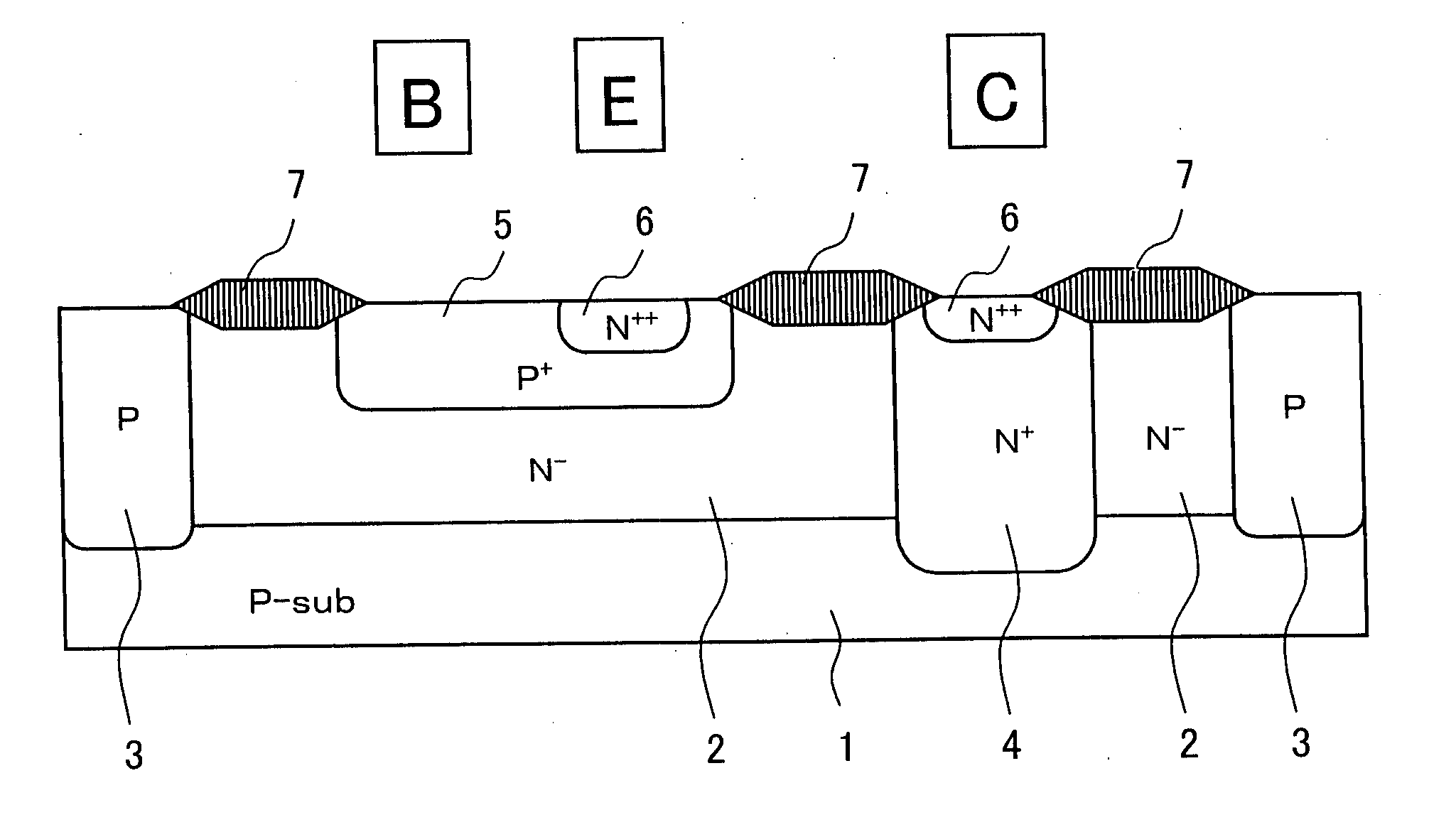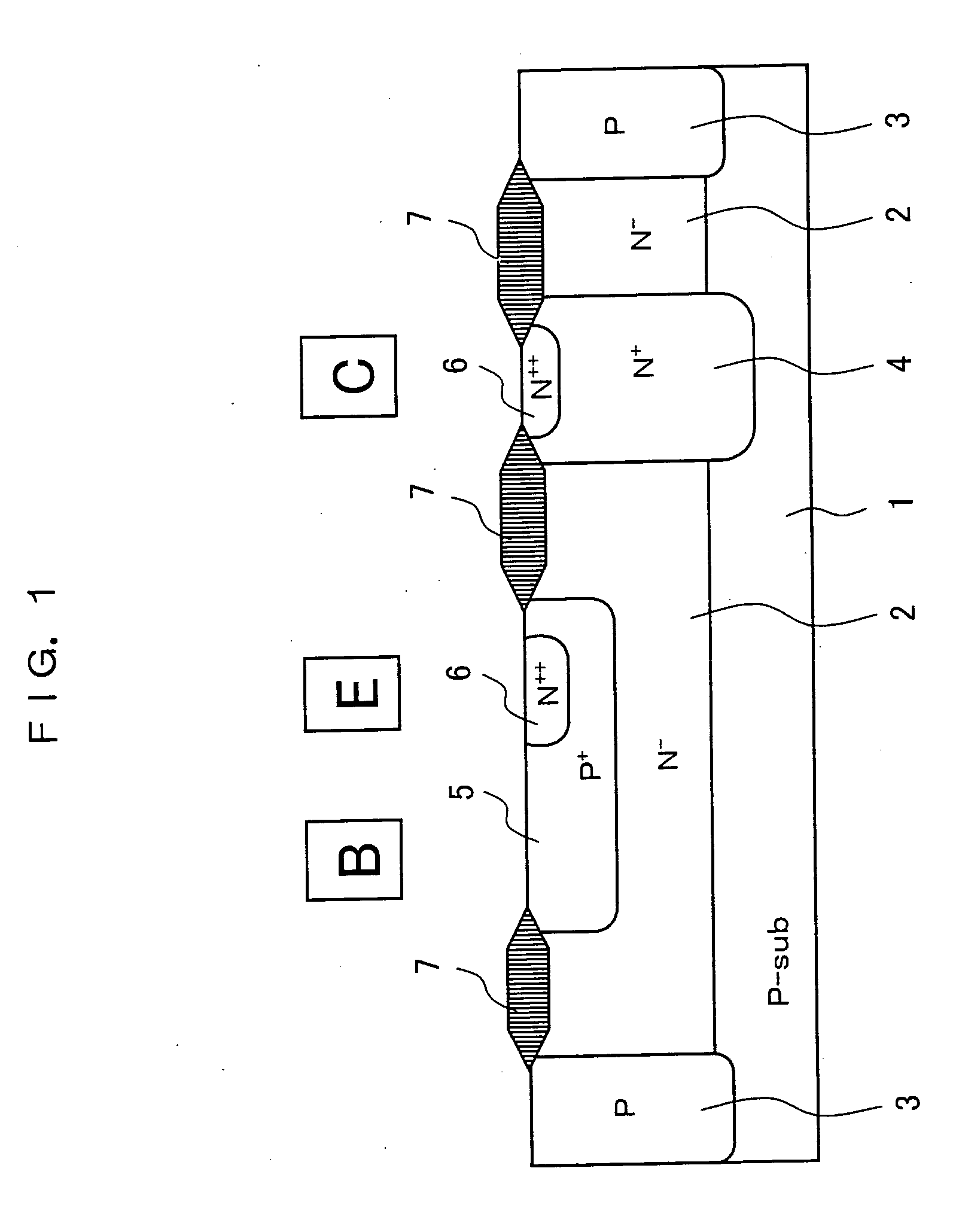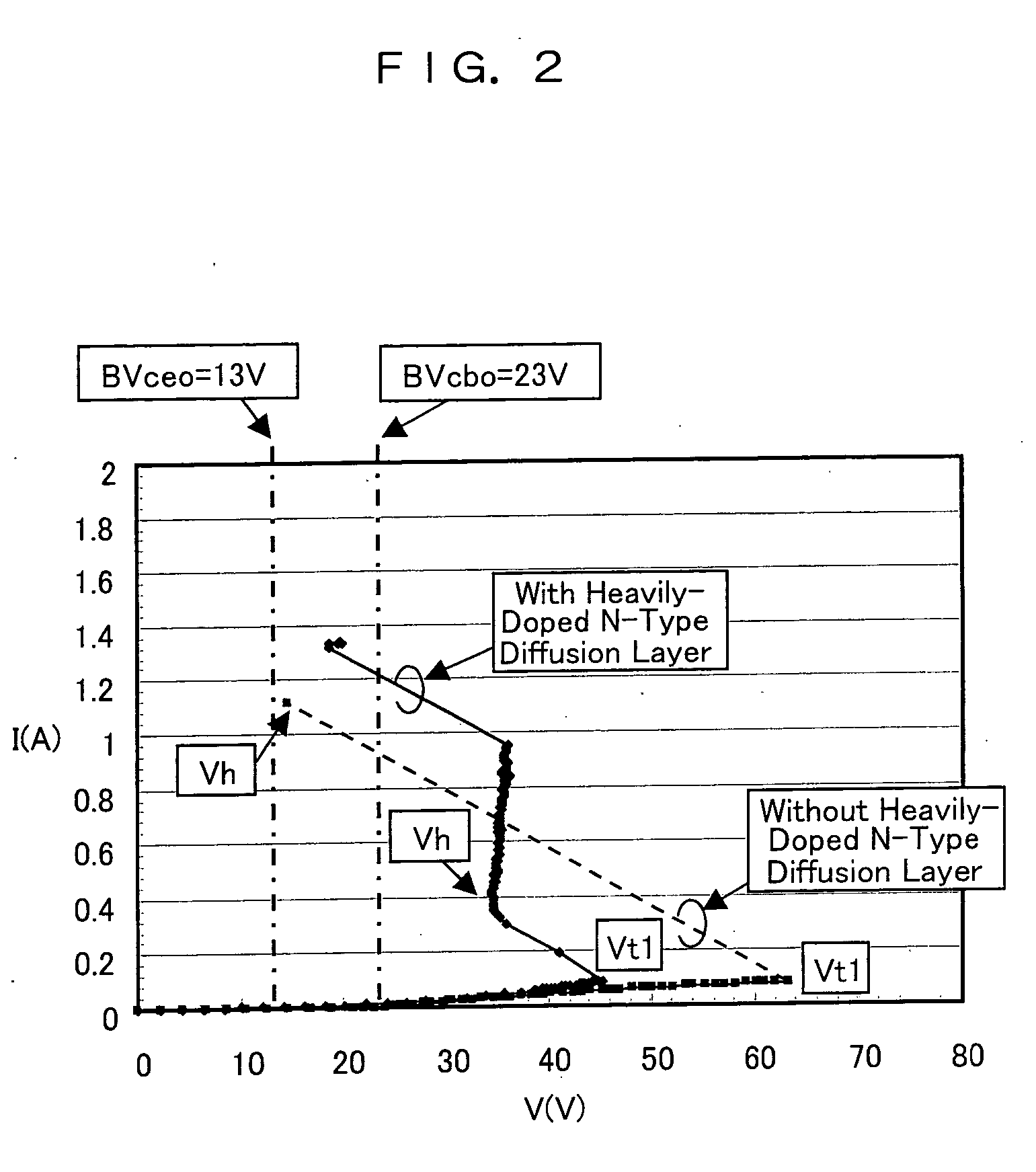Electrostatic protective element of semiconductor integrated circuit
a technology of integrated circuits and protective elements, which is applied in the direction of semiconductor devices, semiconductor/solid-state device details, electrical apparatus, etc., can solve the problems of thermal runaway, breakdown, and low dc withstand voltage bvceo (=vh), so as to improve the uniformity of the action of transistors, reduce the start voltage vt1, and reduce the dispersion of esd breakdown resistance.
- Summary
- Abstract
- Description
- Claims
- Application Information
AI Technical Summary
Benefits of technology
Problems solved by technology
Method used
Image
Examples
first embodiment
[0039] As shown in FIG. 1, the electrostatic protective element according to a first embodiment of the present invention has such a structure in which, in an NPN transistor which is formed with an N-type lightly-doped (N−) diffusion layer 2 serving as a collector layer being formed within a P-type substrate (silicon) 1, a P-type (P+) diffusion layer 5 serving as a base layer, and an N-type diffusion layer 6 serving as an emitter layer, a heavily-doped N-type diffusion layer 4 is formed in a contact area right under a collector electrode. Since the NPN transistor is in a structure with no embedded diffusion layer, the bottom face of the lightly-doped N-type diffusion layer 2 comes directly in contact with the P-type substrate 1 thereby forming pn junction between the collector and the substrate. The diffusion structure of the NPN transistor used in an internal circuit is not formed to have the heavily-doped N-type diffusion layer 4. Reference numeral 3 is an element isolation layer a...
second embodiment
[0048] Next, an electrostatic protective element of a semiconductor integrated circuit according to a second embodiment of the present invention will be described. This is aimed for improving the non-uniform actions.
[0049] As shown in FIG. 5 and FIG. 6, an anode A of a diode 9 is connected to a base B of an electrostatic protective element 8, a cathode K of the diode 9 is connected to a collector C, and the base B is connected to an emitter E through a resistance 10. Further, the base B is connected to an input / output terminal 11 through the diode 9, the collector C is connected to the input / output terminal 11, and the emitter E is connected to a minimum potential terminal 12.
[0050] In general, when the ESD breakdown voltage Vt2 of the NPN transistor is lower than the snapback action start voltage Vt1, breakdown is caused at a voltage lower than the actual withstand voltage. Meanwhile, when the ESD braking voltage Vt2 is higher than the snapback action start voltage Vt1, breakdown...
PUM
 Login to View More
Login to View More Abstract
Description
Claims
Application Information
 Login to View More
Login to View More - R&D
- Intellectual Property
- Life Sciences
- Materials
- Tech Scout
- Unparalleled Data Quality
- Higher Quality Content
- 60% Fewer Hallucinations
Browse by: Latest US Patents, China's latest patents, Technical Efficacy Thesaurus, Application Domain, Technology Topic, Popular Technical Reports.
© 2025 PatSnap. All rights reserved.Legal|Privacy policy|Modern Slavery Act Transparency Statement|Sitemap|About US| Contact US: help@patsnap.com



